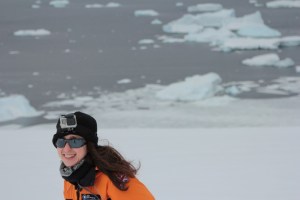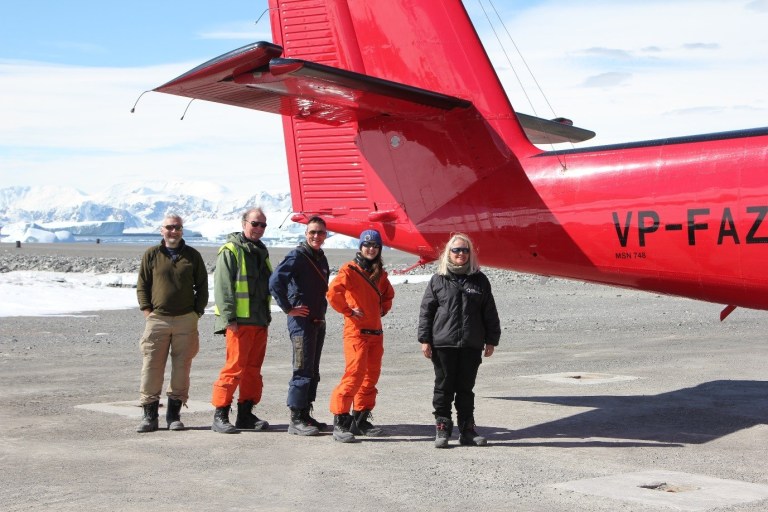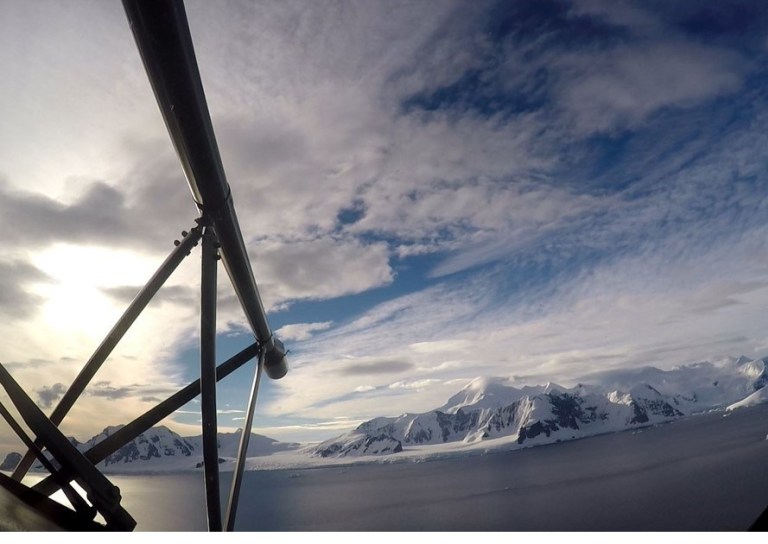Second Article of a series featuring Early Career Scientists

Author: Ella Gilbert
Introduced by ICPM Member: Thomas Lachlan-Cope
I am a PhD student at the British Antarctic Survey (BAS)/University of East Anglia studying the atmospheric processes that drive melt over the Larsen C ice shelf on the Antarctic Peninsula, a part of the world that is changing very rapidly.
Recently, my work has focused on the effect of cloud microphysics on the balance of energy fluxes received at the ice shelf surface, so I have been working extensively with data collected during aircraft measurement campaigns in the Antarctic. I therefore leapt at the chance to get my hands dirty on an airborne field campaign this season, which was part of an ongoing five-year project examining the role of the Southern Ocean in heat and carbon uptake, ORCHESTRA.
The Southern Ocean has global significance for climate. Oceans worldwide have absorbed ~30% of the anthropogenic CO2 emitted since the pre-Industrial era and more than 93% of the additional heat associated with global temperature rise. The Southern Ocean absorbs a disproportionate amount, accounting for half of oceanic carbon uptake, and more than 75% of the heat stored by the world’s oceans.
Unfortunately, we know comparatively little about the Southern Ocean. It is a vast area in a part of the world where it is challenging to conduct observational campaigns. The processes that control the rate of uptake are poorly constrained in climate models and reanalyses because in situ observations are so scarce. Further, precisely how large a sink of heat and carbon the Southern Ocean is may be changing, so it is crucial that we improve our knowledge of these processes.
Enter ORCHESTRA. The project is designed to combat these challenges, and is a collaboration between multiple institutions involving a comprehensive range of data collection methods, including ocean gliders, ship-based observations, and of course aircraft measurements.
The airborne element of the project contributes to understanding of air-sea exchange rates. We were flying at low level (15 – 30 m above the surface) over regions of solid pack-ice, partially ice-covered areas and open water, collecting data on the transfer of energy and gases at high temporal resolution (up to 50 Hz). This high resolution was important for calculating fluxes using the eddy covariance method, which is useful for accurately and precisely constraining ocean-atmosphere exchange.
During the field season I was involved with, we were primarily based at Rothera research station on the Antarctic Peninsula, which meant we could fly east or west to sample fluxes in either the Weddell or Bellingshausen Seas. However, the aircraft also conducted several flights coordinated with either ocean gliders or the British Antarctic Survey’s research vessel, which were sampling further north, in a region where ocean fronts are present.
In total, we clocked up around 60 hours of flight time, and managed to collect data in several different parts of the Southern Ocean. We were also able to measure fluxes in the region of water newly exposed by the calving of an enormous iceberg from the Larsen C ice shelf in July 2017. For me, that was particularly momentous because it meant I got to see the subject of my PhD research ‘in-the-flesh’ for the first time, which helped bring together everything I’ve learned so far.
People say that your first visit to Antarctica sticks with you forever, and I can see why. Spending six weeks ‘down South’ was an otherworldly experience, but more importantly I learned things first-hand about the polar environment that I would never have been able to from my desk, and which reinvigorated my passion for polar atmospheric science.


